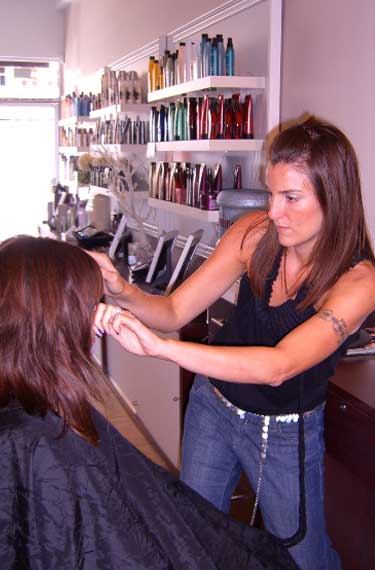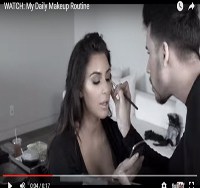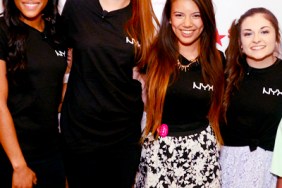You’re probably thinking that you already know what hairstylists do — you get your hair cut all the time, you see them working. But in reality there’s soooo much more that we just don’t learn from gossiping in the stylist’s chair.
To get the full scoop on what being a hairstylist is really like — and how you can become a successful hairdresser with A-list clients — we talked to Natasha Sunshine-Antonioni, owner and lead stylist of Byu-ti Hair Therapy Salon in Santa Monica, Calif. (Her clients include Molly Sims, Ivanka Trump, Stephanie Seymour and Eva Herzigova.) She’s had an amazing career — working with Redken and Pureology, inventing her own method of haircutting — and she shared all the details with us.
Beauty Riot: Why did you decide to be a hairstylist?
Natasha Sunshine-Antonioni: I had a passion for hair itself, and then my love of people grew. Which is not always the case, some people love hair but realize they don’t love working with people. Those stylists tend to do more editorial work and less work in the salon. There’s less people interaction and more creativity.
BR: What was the beginning of your career like?
NSA: At a young age I was busy as a stylist. I was a bit of a natural with the hairstyling; it didn’t take a lot of effort. I wanted a challenge, so I got into the world of motivational speaking. For a while, the salon job paid the bills, and on the side I would teach motivational seminars.
BR: What made your career really take off?
NSA: Well, I’m a goal-oriented person, always looking for the next challenge. I wanted to incorporate the two things I was doing and bring the motivational services to the guest and elevate a traditional haircut. So that’s how I created the healing haircut. I was doing something I loved and that combined with the power of marketing meant the press ate it up.
Redken approached me after that and wanted me to help develop a line of products. After that my career turned toward education. I traveled a lot for Redken [educating hairstylists]. Then I moved to Los Angeles and opened my salon; it’s the flagship Pureology salon in LA. [Redken owns Pureology, that’s how she became connected with the brand.]
BR: Can you explain what the healing haircut is?
NSA: The service was a head, neck and shoulder massage, a consultation, a time to reflect on what you want to let go in life, and acupressure. Basically, the treatment begins with a question to the client: what would you like to let go of? Then she is supposed to imagine letting go of it while her hair is being cut.
BR: You’ve had a lot of twists in your career, what are some other career paths people can take as a hairstylist?
NSA: A lot of hairstylists move into corporate jobs at hair care brands. But really there are lots of options as a hairstylist: you could move into corporate job, be an educator, do marketing for a hair brand, the list goes on. A lot of people eventually get tired of working with clients and move into the corporate world.
BR: What’s your career like these days?
NSA: Now I’m managing my salon and working as an educator with Pureology. They ask me to share tips on celeb looks for press releases, help them with how-tos, that sort of thing. It’s great to be able to do challenging and diverse things.
I’ve always been a stylist with goals, both financially and for my career and I’ve gotten to do a lot of the things I wanted: I did shoots for Vogue, I worked runway shows. Now I want to work to create an environment of growth for my staff. So they can go from assistant, to stylist, to manager, to share holder, and grow with the salon. Because of that, we have a very loyal staff, even though it’s a transient business.
BR: Now to the dirty details, what would you say is the worst or toughest part of your job?
NSA: I’d say the tough part of job is that you’re entering a stage every day [at the salon], so you can’t be grumpy with clients; you have to save it for the back room. It’s like playing a role and you have to build a character that you believe in and is true to who you are.
BR: OK, enough with the downers, what’s the best part of your job?
NSA: The best part of the job is definitely my love of people, and connecting with another human being. At first I had client relationships, but now it’s mainly with my staff, they are like my clients now.
BR: What would people be surprised to learn about being a hairstylist?
NSA: Probably the time it takes to get yourself established. You graduate from beauty school and you need another year of training and at least another year in a salon to be making good money.
BR: Since it is such hard work, how can someone know if beauty school is right for them?
NSA: If you’re thinking of beauty school, really think it through. You have to have a passion for people, you can’t just love doing hair. You also need to know that it takes time and focus. Beauty school tends to attract people with ADD or artist types but success in this industry is not something you get quickly so you have to be prepared for that.
There’s a lot of repetition, which you don’t think about while you’re in school. Here’s an example: Say it’s Christmas time. If you have a client base of say, 250 people, that means that 250 people will ask you what you did for Christmas. It can drive you nuts if you’re not a people person.
BR: And finally, what advice would you give to hairstylists just starting out?
NSA: Know that you’re getting into the people business. You may love hair and fashion, but that’s only one piece of what you do.
And if you want to get to that next level [a high-end salon or better position], keep focused and get very clear on what you want and be willing to put the time in. There are a lot of hoops to jump through with bigger brands, so you need stamina.
You know that “Devil Wears Prada” lifestyle? You have to be able to live it.
I would also say to aim high, don’t get stuck in a rut, and always set your sights on the next big thing — whether it’s a higher-end salon, being an educator, whatever
People tend to get burnt out in this field after about five years, so you have to create new challenges for yourself.




